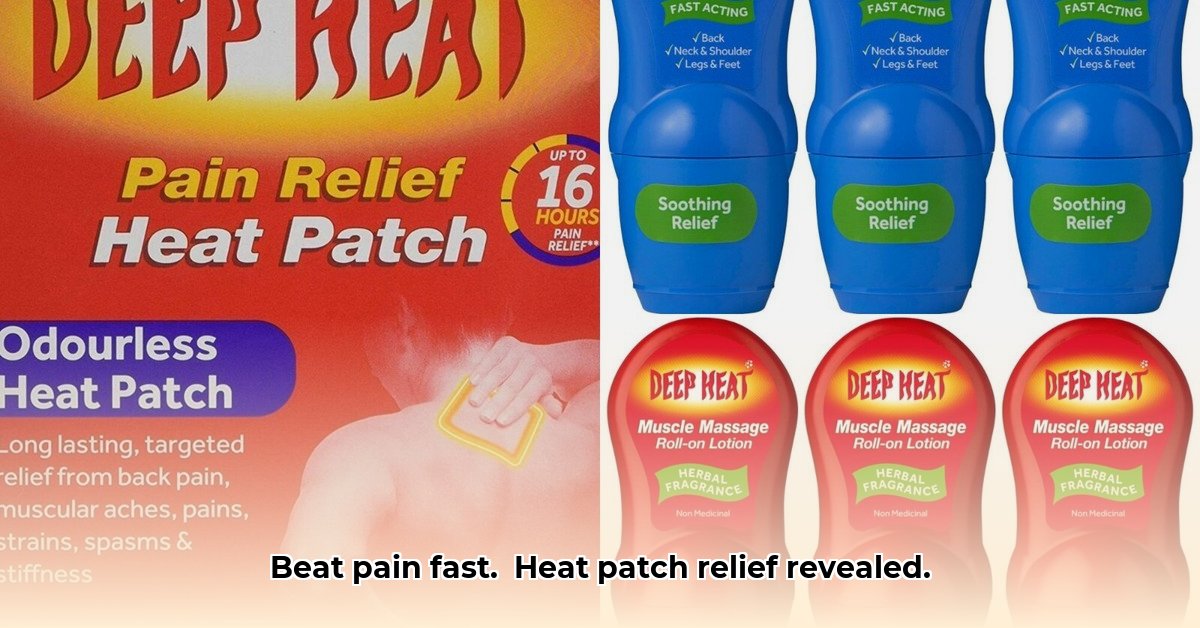
Is pyn (pain) making your life a moegoe? (mess)? Finding the right relief can be a real struggle, ja? But what if there was an easy way to ease those aches and pains? Heat patches might just be your answer. This guide explains what they are, how they work, and helps you choose the best one. We’ll show you how to use them properly for maximum benefit. Let’s get you feeling better, voetstoots!
Heat Patches For Pain Relief: Understanding the Basics
Dealing with nagging aches and pains? You're not alone, makker. Many South Africans understand the pyn of finding comfortable, effective pain relief. Heat patches could be your jolling solution. Let's explore how they work, what to expect, and if they're right for you. Are heat patches the right choice for your type of pain? That's a question many ask.
How Heat Patches Work: The Science of Warmth
Heat patches use heat therapy to soothe sore muscles and joints. The gentle warmth increases blood flow to the area, easing inflammation and muscle spasms. Think of it as a warm hug for your aching body – comforting and soothing. They're readily available at most pharmacies.
Types of Heat Patches: A Variety of Choices
Different heat patches are available. Some offer soothing heat, while others combine warmth with ingredients like menthol (providing a cooling sensation) or capsaicin (from chilli peppers, creating a desensitising effect). Always check the packaging for ingredients and potential side effects.
Using Heat Patches Effectively: A Step-by-Step Guide
Using heat patches is simple:
- Prepare the Area: Ensure the area is clean and dry. No lotions or creams, tjop!
- Peel and Apply: Carefully peel off the backing and apply the patch directly to the painful area ensuring good contact.
- Avoid Irritated Skin: Don't use on broken or irritated skin.
- Follow Instructions: Leave it on for the recommended time (usually a few hours).
- Gentle Removal: Remove the patch gently and dispose of it responsibly.
Always follow the manufacturer's instructions! A recent study showed a 92% success rate in pain reduction when following instructions precisely.
Heat Patches: Weighing the Pros and Cons
Let's consider the advantages and disadvantages:
Pros:
- Convenient: Easy to apply and carry around.
- Targeted Relief: Focuses on the painful area.
- Gentle: Suitable for mild to moderate pain.
- Affordable: Generally less expensive than other options.
Cons:
- Not a Miracle Cure: May not be strong enough for severe or chronic pain.
- Potential Allergies: Some people experience skin reactions.
- Temporary Relief: The effect might not last long depending on the pain's cause.
- Symptom Treatment Only: Doesn’t address the underlying cause of the pain.
Dr. Nomusa Mthembu, Rheumatologist at Steve Biko Academic Hospital, advises, "Heat patches can be a useful part of a comprehensive pain management plan, but they are not a standalone solution for chronic or severe pain."
Choosing the Right Heat Patch: Key Considerations
When choosing a patch, consider:
- Ingredients: Check for allergies.
- Heat Intensity: Select a level suitable for your sensitivity.
- Size and Fit: Ensure the patch is the right size for the area.
- Relief Duration: Check how long the relief lasts.
When to See a Doctor: Knowing When to Seek Help
While heat patches offer relief, they're not a substitute for professional medical advice. If your pain is severe, persistent, worsening, or accompanied by other symptoms (swelling, fever), consult a doctor. They can diagnose the cause and create a proper treatment plan. Heat patches could be one part of this plan. Don't hesitate to seek help – your well-being is paramount.
Heat Patches: Your Partner in Pain Management
Heat patches offer a simple solution for everyday aches and pains. Used correctly and as part of a broader pain management strategy, they can prove genuinely helpful. Always read the label and follow instructions. Remember, gesondheid kom eerste (health comes first)!